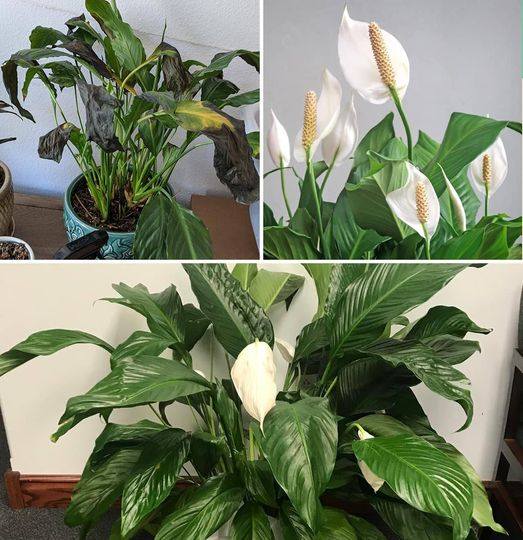Place your Spathiphyllum near a window where it can get indirect sunlight. Too much direct sunlight can scorch the leaves, while too little light may prevent flowering.
If you notice that the plant’s leaves are turning yellow or the growth slows down, it may be an indication that it needs more light.
3. Fertilizing: Feed During Growing Season
Why it’s important: Regular feeding encourages robust growth and more flowers. Without proper nutrition, your Peace Lily may not bloom as frequently or develop its vibrant green foliage.
How to do it:
Fertilize your Peace Lily once a month during the growing season (spring and summer) with a balanced, water-soluble fertilizer. Use a fertilizer specifically for houseplants or one with a ratio like 20-20-20 (nitrogen, phosphorus, potassium).
Avoid fertilizing during the fall and winter months when the plant is in its dormant phase.
Additional Tips:
Pruning: Remove any yellow or brown leaves regularly to keep your plant looking fresh and healthy.
Repotting: Repot your Peace Lily every 1-2 years to refresh the soil and provide enough space for root growth. Choose a pot that’s 1-2 inches larger than the current one.
FAQ:
Why is my Peace Lily not blooming? A lack of blooms could be due to insufficient light, underwatering, or not enough nutrients. Ensure you’re following the watering, lighting, and fertilizing recommendations for the best results.
How do I know when to water my Spathiphyllum? Water when the top 1-2 inches of the soil are dry to the touch. If the leaves begin to droop, it may be a sign that the plant is thirsty.
By following these simple yet effective tips, you’ll be able to enjoy a healthy, green, and flowering Spathiphyllum all year long!



Yo Make również polubił
Apple Cranberry Crisp with a Crunchy Oat Topping – Sweet, Tart & Perfectly Cozy!
Berrylicious Strawberry Crunch Cheese Cake – A Creamy, Fruity Delight
Steak with Creamy Peppercorn Sauce and Roasted Potatoes – A Gourmet Delight
Homemade Onion Soup Mix: A Flavorful Pantry Staple!